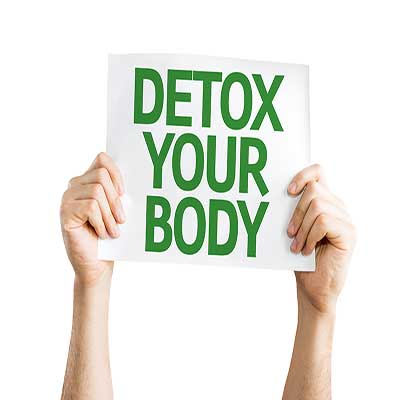Detoxification
Overview of Detoxification
Our increasingly toxic world creates a major burden on our bodies. Exposure through the air we breathe, the stress we feel and the food we ingest can add up to over 14 pounds of pesticides, herbicides, food additives and preservatives per year for the average American. The liver, together with the gastrointestinal (GI) tract, is the organ responsible for removing these toxins through a process called biotransformation. If the liver is not working at full speed, every other system in the body is at risk as fat soluble toxins, which are poorly excreted, become stored in the body.
The process of biotransformation is performed through a two-step enzymatic process known as Phase I and Phase II detoxification. These two pathways help to breakdown toxins into harmless substances.
Phase I is composed of a series of enzymes, called cytochrome P450, which chemically change harmful, fatsoluble toxins into more toxic substance called intermediate metabolites. Since the “intermediary metabolites” are often more toxic than the original fat- soluble toxin, they must then go through Phase II processing into safe and water-soluble form through their attachment to other molecules, to form inert compounds which are then safely released from the body. The Core Restore Program is a science-based system strategically designed to enhance Phase II mechanisms first, ensuring proper clearance of toxins, then provides nutritional support for Phase I detoxification making sure each step of biotransformation is in sync and reducing the toxic burden on the body.
The typical American diet has wreaked havoc on our gut. Most experience leaky gut syndrome, irritable bowel and even Chrohn’s disease. The fact that our gut is important to our health is overlooked by many. A variety of diseases, skin disorders and an overall ill feeling come from our guts. A good detox is a great start to the a renewed gut. Our Whole Body detox program is a combination of a colon and liver detox kit (which includes a diet plan of clean eating) along with weekly treatment of Glutathione IV therapy. This program also incorporates a new gut enhancement supplement for ongoing protection combined with a high dose probiotic to repopulate the gut with beneficial bacteria. Through proper supplementation we can help improve those intestinal issues and give you that boost of energy to put you on track to better health

